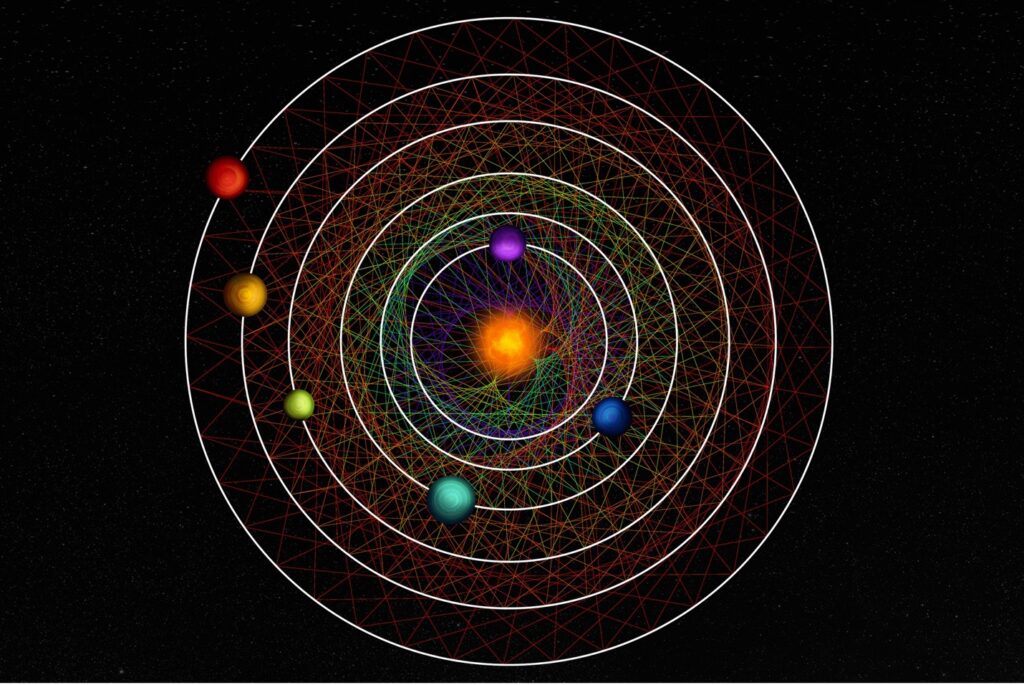Exciting research hailed as ‘benchmark’ in research of common exoplanets
Astronomers have made a remarkable discovery in a nearby star system, identifying six planets orbiting their central star, HD110067, in a synchronized, rhythmic pattern. The discovery, led by UChicago scientist Rafael Luque, is a significant stride in understanding planet formation and evolution, especially of sub-Neptunes, the most common type of planets outside our solar system.
This system, located approximately 100 light-years away in the constellation of Coma Berenices, was studied using data from NASA’s Transiting Exoplanet Survey Satellite (TESS) and the European Space Agency’s CHaracterising ExOPlanet Satellite (CHEOPS).
“This discovery is going to become a benchmark system to study how sub-Neptunes, the most common type of planets outside of the solar system, form, evolve, what are they made of, and if they possess the right conditions to support the existence of liquid water in their surfaces,” Luque says in a statement.
The planets in the HD110067 system exhibit an “in sync” gravitational lockstep, a rare case of orbital resonance where the innermost planets are in a 3/2 resonance, and the outer planets follow a 4/3 resonance pattern. This means, for example, that the planet closest to the star completes three orbits for every two of the next planet. “We think only about one percent of all systems stay in resonance, and even fewer show a chain of planets in such configuration,” Luque says, underscoring the rarity of this discovery.
Initially, the arrangement of the six planets was a puzzle, with only the two inner planets’ orbits known from TESS observations. CHEOPS’s targeted observations were crucial in discerning the periods of the other planets. The team’s innovative modeling of gravitational interactions between the planets led to the discovery of their precise orbital periods: 9, 14, 20.5, 31, 41, and 55 days.
The international collaboration involved researchers from the University of Bern and the University of Geneva, members of the National Center of Competence in Research (NCCR) PlanetS. “Amongst the over 5000 exoplanets discovered orbiting other stars than our Sun, resonances are not rare, nor are systems with several planets,” explains Dr. Hugh Osborn, a CHEOPS fellow at the University of Bern, emphasizing the system’s uniqueness. “What is extremely rare though, is to find systems where the resonances span such a long chain of six planets.”
The study, combining TESS and CHEOPS data, was initially challenged by the unclear arrangement of the planets. The precision of CHEOPS was pivotal in determining the orbital periods of the planets. “A transit occurs when a planet, from our point of view, passes in front of its host star, blocking a minute fraction of the starlight, creating an apparent dip of its brightness,” explains Prof. Adrien Leleu, from the University of Geneva, in a media release.
With this discovery, HD110067 offers a key opportunity for future research. The system’s brightness compared to other resonant-chain systems like TRAPPIST-1 makes it an ideal candidate for studying planetary atmospheres.
Jo Ann Egger, a PhD student at the University of Bern, highlights this advantage. “The fact that the planets in the HD110067 system have been detected by the transit method is key,” she says. “While they pass in front of the star, light also filters through the planetary atmospheres.” This property enables astronomers to probe the chemical composition and other properties of these atmospheres.
The discovery of HD110067 and its unique planetary arrangement provides an unparalleled window into the dynamics of planetary systems, offering insights into their formation, evolution, and potential habitability.
The research paper is published in the journal Nature.












